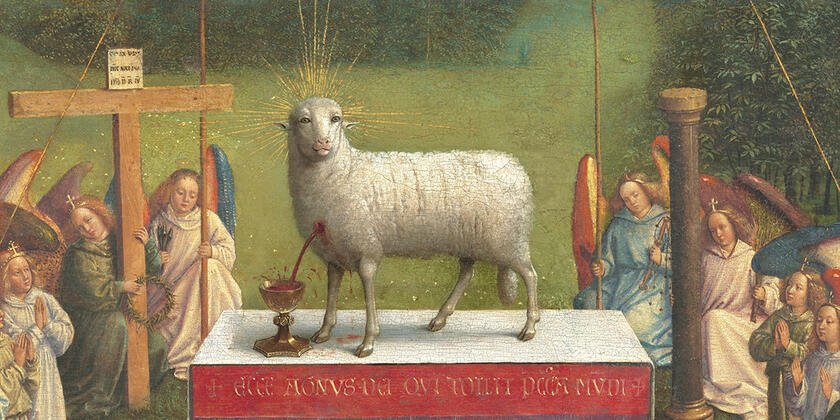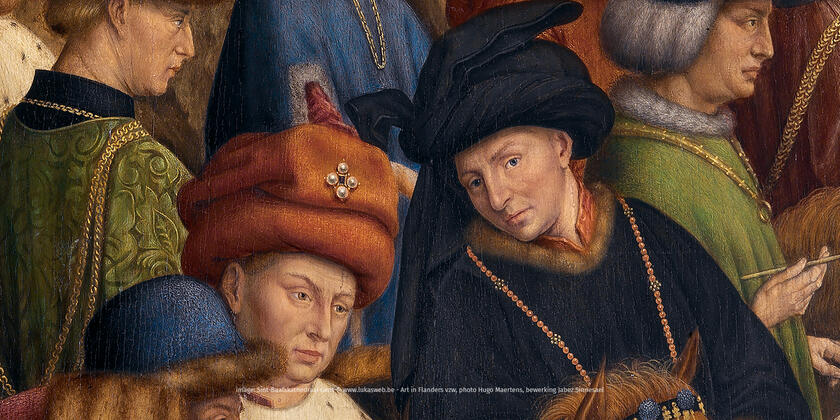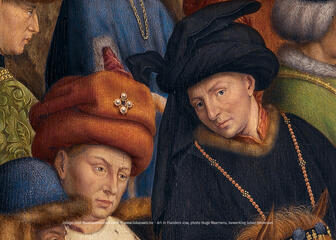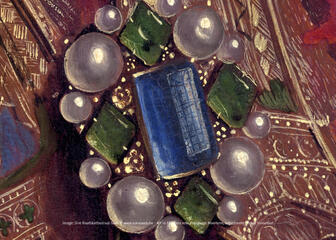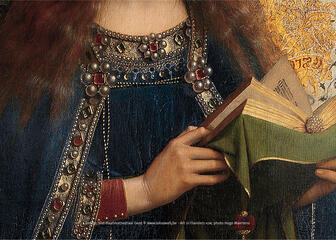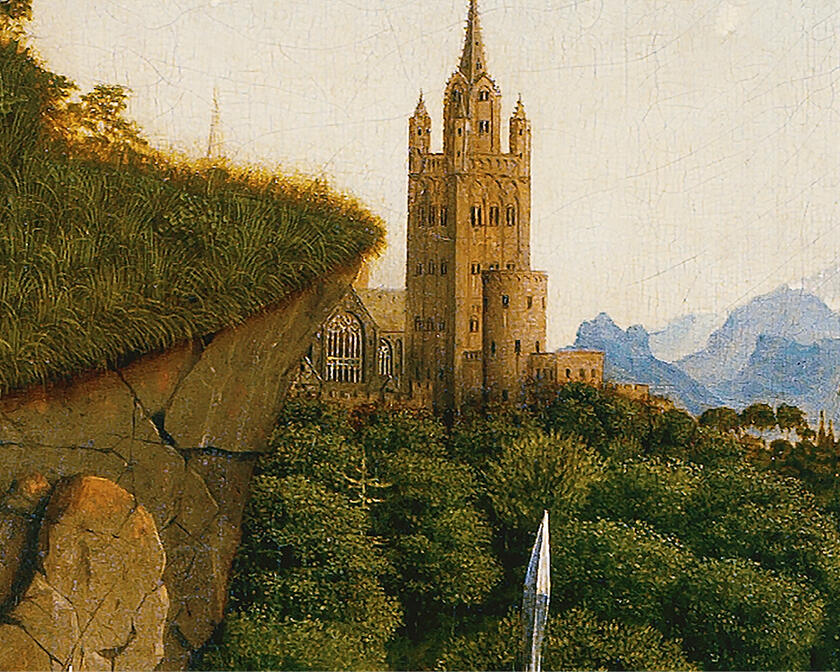
"Some artists inspire you. Van Eyck leaves you stupefied."
The New York Times
Jan van Eyck, the scientist
Jan Van Eyck was a true genius! He was the first artist to perfect the oil painting technique. He did not just have great technical skills, his eye for detail was also phenomenal! Jan Van Eyck’s eye operated as a microscope and telescope. He was one of the first painters to depict a realistic moon with craters.
Jan van Eyck, the court painter & confidant
Jan van Eyck was court painter for Philip the Good, Duke of Burgundy (1396-1467). The flamboyant duke and his entourage surrounded themselves with the best artists. At the same time, the Flemish cities of Ghent and Bruges were prospering as trading centres. Wealthy merchants and politicians mirrored the pomp and circumstance of the courts and were in turn buyers of luxury goods. This was Jan van Eyck’s creative environment, between the court and the city, between art and métier.
Thanks to his travels with Philip the Good, he discovered new landscapes and plants, which he depicted with effortless detail on the Ghent Altarpiece.
Van Eyck’s masterpiece & influence
Jan van Eyck left the city of Ghent a legacy: the Ghent altarpiece, with the innovation and revolution in the art world that the world-famous masterpiece brought about. This work was revolutionary in 1432, but not only then: to this day, van Eyck continues to make his mark on Ghent and the modern world.
